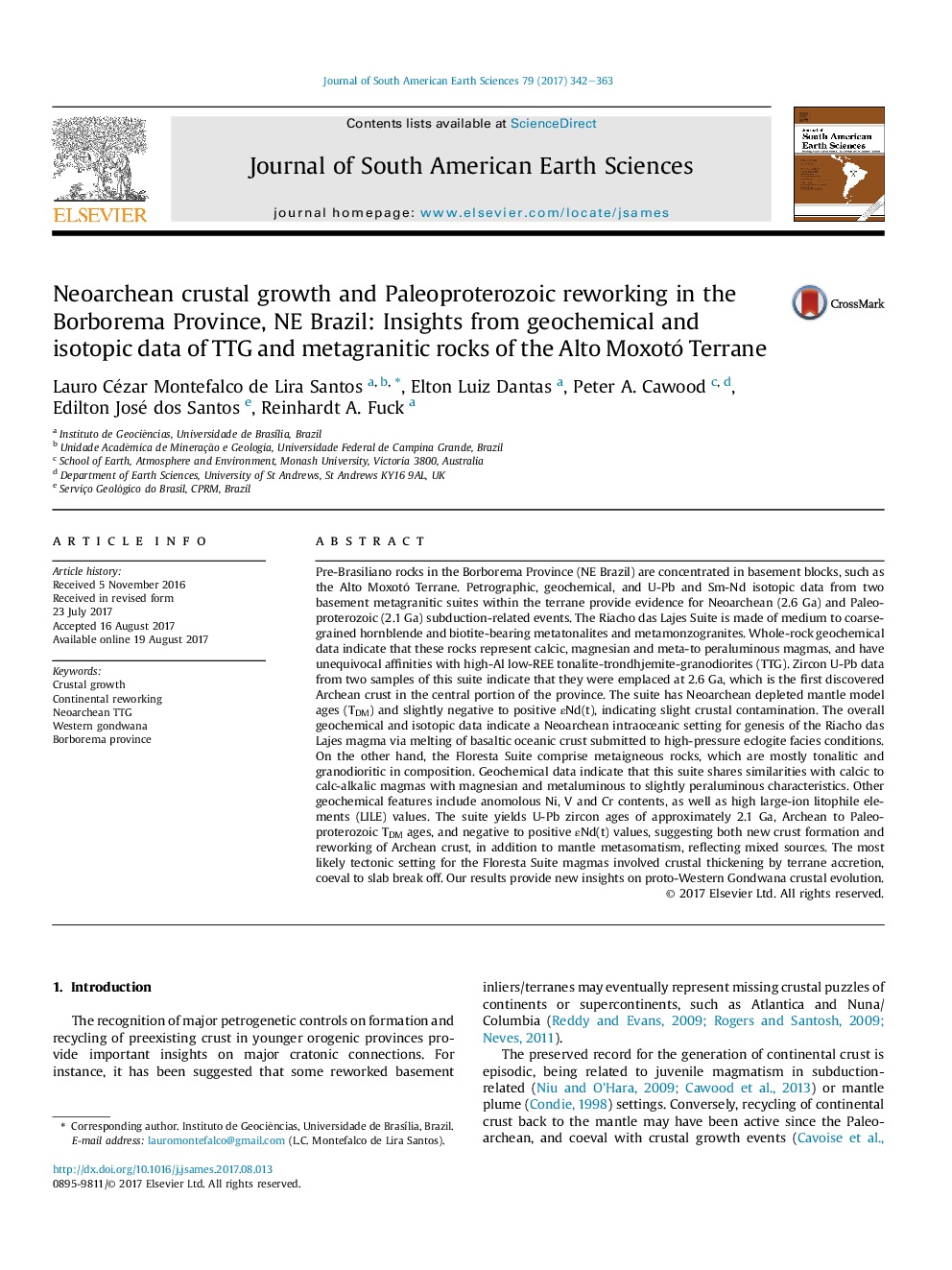| Article ID | Journal | Published Year | Pages | File Type |
|---|---|---|---|---|
| 5780410 | Journal of South American Earth Sciences | 2017 | 22 Pages |
â¢First record of Archean Continental Crust in Central Subprovince of the Borborema Province.â¢Geochemical and isotopic data reveals a complex accretionary history for the Alto Moxotó Terrane.â¢Our data provide evidence for new Neoarchean crustal growth and Paleoproterozoic reworking in central Western Gondwana.
Pre-Brasiliano rocks in the Borborema Province (NE Brazil) are concentrated in basement blocks, such as the Alto Moxotó Terrane. Petrographic, geochemical, and U-Pb and Sm-Nd isotopic data from two basement metagranitic suites within the terrane provide evidence for Neoarchean (2.6 Ga) and Paleoproterozoic (2.1 Ga) subduction-related events. The Riacho das Lajes Suite is made of medium to coarse-grained hornblende and biotite-bearing metatonalites and metamonzogranites. Whole-rock geochemical data indicate that these rocks represent calcic, magnesian and meta-to peraluminous magmas, and have unequivocal affinities with high-Al low-REE tonalite-trondhjemite-granodiorites (TTG). Zircon U-Pb data from two samples of this suite indicate that they were emplaced at 2.6 Ga, which is the first discovered Archean crust in the central portion of the province. The suite has Neoarchean depleted mantle model ages (TDM) and slightly negative to positive εNd(t), indicating slight crustal contamination. The overall geochemical and isotopic data indicate a Neoarchean intraoceanic setting for genesis of the Riacho das Lajes magma via melting of basaltic oceanic crust submitted to high-pressure eclogite facies conditions. On the other hand, the Floresta Suite comprise metaigneous rocks, which are mostly tonalitic and granodioritic in composition. Geochemical data indicate that this suite shares similarities with calcic to calc-alkalic magmas with magnesian and metaluminous to slightly peraluminous characteristics. Other geochemical features include anomolous Ni, V and Cr contents, as well as high large-ion litophile elements (LILE) values. The suite yields U-Pb zircon ages of approximately 2.1 Ga, Archean to Paleoproterozoic TDM ages, and negative to positive εNd(t) values, suggesting both new crust formation and reworking of Archean crust, in addition to mantle metasomatism, reflecting mixed sources. The most likely tectonic setting for the Floresta Suite magmas involved crustal thickening by terrane accretion, coeval to slab break off. Our results provide new insights on proto-Western Gondwana crustal evolution.
Graphical abstractDownload high-res image (133KB)Download full-size image
